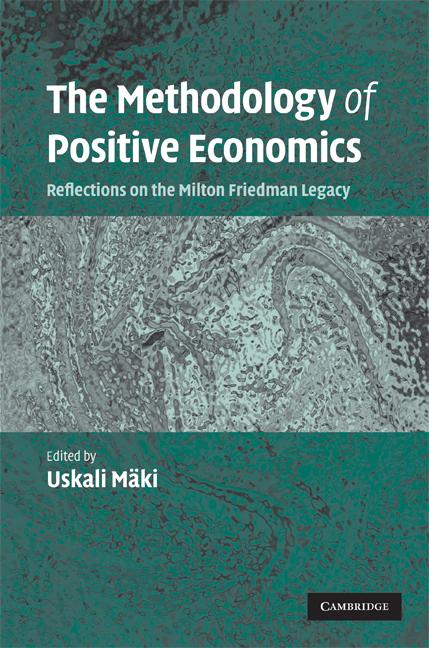
Zustellung: Sa, 05.07. - Mi, 09.07.
Versand in 7 Tagen
VersandkostenfreiBestellen & in Filiale abholen:
A team of world-renowned experts cast new light on Milton Friedman's 1953 essay 'The methodology of positive economics'.
Inhaltsverzeichnis
List of figures; List of tables; List of contributors; Preface; Part I. The Classical Essay in 20th Century Economic Methodology: The methodology of positive economics (1953) Milton Friedman; Part II. Reading and Writing a Classic: 1. Reading the methodological essay in twentieth century economics: map of multiple perspectives Uskali Mäki; 2. Early drafts of Friedman's methodology essay J. Daniel Hammond; 3. Unrealistic assumptions and unnecessary confusions: rereading and rewriting F53 as a realist statement Uskali Mäki; Part III. Models, Assumptions, Predictions, Evidence: 4. The influence of Friedman's methodological essay on economics Tom Mayer; 5. Did Milton Friedman's methodology license the formalist revolution? D. Wade Hands; 6. Appraisal of evidence in economic methodology Melvin Reder; 7. The politics of positivism: disinterested predictions from interested agents David Teira Serrano and Jesús Zamora Bonilla; Part IV. Theoretical Context: Firm, Money, Expected Utility, Walras and Marshall: 8. Friedman's 1953 essay and the marginalist controversy Roger Backhouse; 9. Friedman (1953) in relation to theories of the firm Oliver Williamson; 10. Friedman's selection argument revisited Jack Vromen; 11. Expected utility and Friedman's risky methodology Chris Starmer; 12. Friedman's methodological stance: causal realism Kevin D. Hoover; 13. On the right side for the wrong reason: Friedman on the Marshall-Walras divide Michel De Vroey; Part V. Concluding Perspectives: 14. The debate over F53 after 50 years Mark Blaug; 15. Final word Milton Friedman; References; Index.
Produktdetails
Erscheinungsdatum
28. Mai 2009
Sprache
englisch
Seitenanzahl
382
Herausgegeben von
Uskali Mäki
Verlag/Hersteller
Produktart
gebunden
Gewicht
703 g
Größe (L/B/H)
235/157/25 mm
ISBN
9780521867016
Entdecken Sie mehr
Pressestimmen
'Milton Friedman's 'The Methodology of Positive Economics' was arguably the most important methodological statement in twentieth-century economics. The essay encapsulated what it meant to be truly scientific in an age and a profession that took 'being truly scientific' very seriously. In celebration of the fiftieth anniversary of its publication, Uskali Maki has assembled an impressive array of scholars to explore the essay from a wide variety of perspectives. He has done a superb job: the papers are uniformly substantive and informative. The volume is a fitting golden anniversary present to the profession.' Bruce Caldwell, University of North Carolina at Greensboro 'If economic methodologists had a bible, Friedman's 'The Methodology of Positive Economics' would be it. If economic methodologists had a Talmudic study of its bible, this book would be it. The book is insightful, thoughtful, and thought provoking. Who would have thought that after fifty years, there is still so much to say about Friedman's methodological essay? The book is necessary reading for anyone studying formal economic methodology.' David Colander, Middlebury College, Vermont
Bewertungen
0 Bewertungen
Es wurden noch keine Bewertungen abgegeben. Schreiben Sie die erste Bewertung zu "The Methodology of Positive Economics" und helfen Sie damit anderen bei der Kaufentscheidung.










